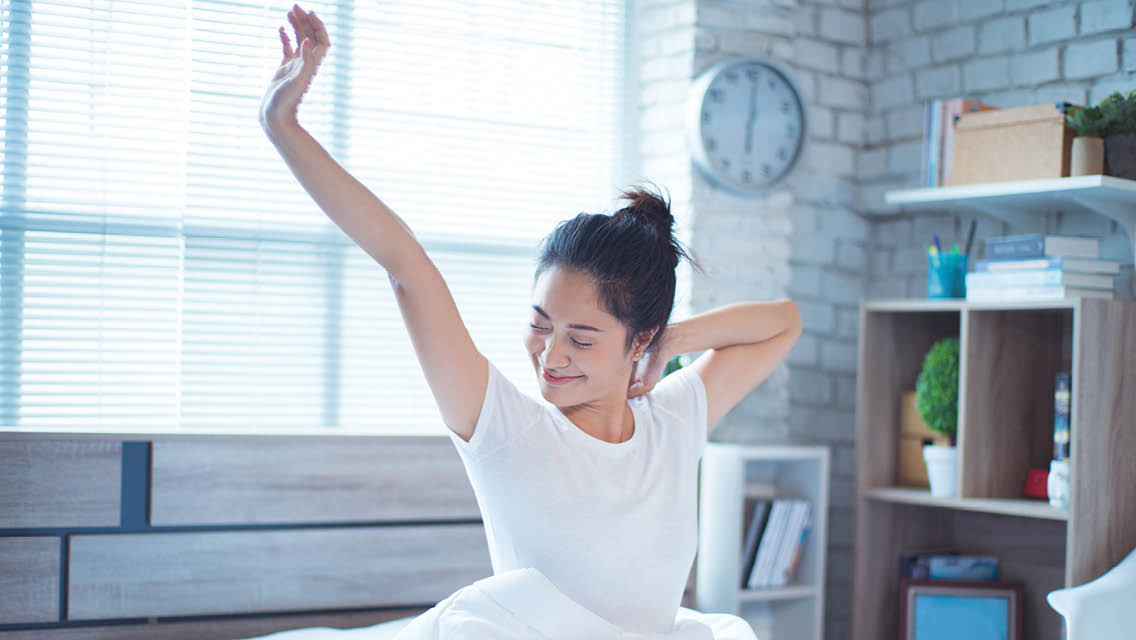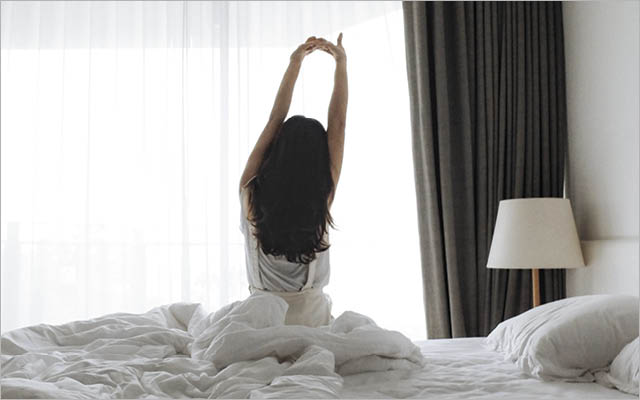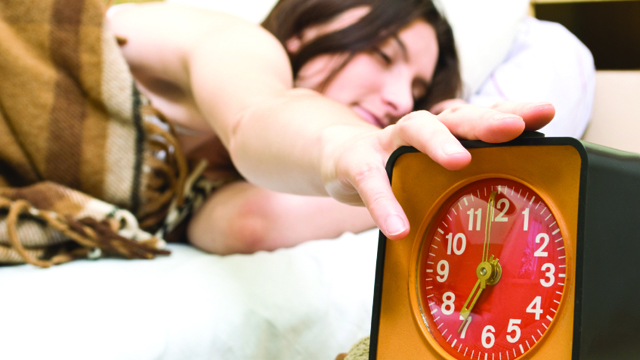Call it morning panic: The alarm clock rings, your eyes pop open, and you’re immediately off to the races, filled with anticipatory dread about the day’s myriad tasks. It’s super stressful — and a missed opportunity, too, says Judith Orloff, MD, an assistant clinical professor of psychiatry at UCLA and author of Emotional Freedom: Liberate Yourself From Negative Emotions and Transform Your Life. In her book, Orloff identifies stress barriers and obstacles to overcome. “The biggest barrier to serenity in the morning is in your own head: It’s how you frame the day,” Orloff says. But if you can do some simple reframing as soon as you wake up, the morning can be a great time to carve out some calm space and time for yourself, and set yourself up for a more peaceful and productive day.
Stress Source: Early-morning panic.
The anxiety that takes over the minute you wake up, as thoughts of tasks, schedule demands and potential problems crowd your brain and set your heart pounding.
Barriers
The packed to-do list. Having too much to do, from job to kids to relationships — and being overly conscious of it first thing in the morning — is one of the most common causes of wake-up anxiety.
Morning fatigue. Millions of Americans are “under-slept,” says Orloff. And feeling tired in the morning can significantly contribute to anxiety.
Anticipatory fears. “You might be worried about some encounter that’s going to take place during the day, or have ongoing health fears or any number of other concerns that hit you upon awakening,” Orloff notes.
A sense of choicelessness. Orloff thinks that the major contributor to morning anxiety is the sense that we have no choice but to feel stressed: “We feel like we’re on autopilot in the morning, that we’re stuck in reactive mode.”
How to Cope
List your anxieties. “At some time — not in the morning! — put your five major anxieties down on paper,” says Orloff. “Then you won’t be ambushed by them when you wake up.” Next, use the calming techniques below.
Meditate. Orloff recommends a three-minute meditation: “You simply breathe, center, and focus on something positive and wonderful. Do it for only three minutes right when you wake up — because limiting it teaches you to find emotional calm quickly.” Placing your hand over your heart during the meditation can add an additional element of warmth and self-soothing.
Establish a morning ritual. This can include a longer meditation period, simple yoga stretches for relaxation or prayer. “Make the ritual very pleasant,” says Orloff, “so you don’t think of it as just another obligation.” (For more suggestions about rituals, see “Stress Solver,” below.)
Keep bedtime peaceful. While it’s smart to tackle anxiety-producing tasks early — before they are due or overdue — Orloff cautions against spoiling bedtime with them. “Jamming in tasks just before you go to bed creates a really restless sleep, and you will not necessarily feel better in the morning.”
Anticipate something good. “What in your day are you looking forward to?” asks Orloff. “Home in on that as a special treat.”
Protect what’s essential. You may not have control over everything that happens in your life, but the tone you set first thing in the morning and last thing at night can influence everything that comes between. (For more on this, see “Bookends”.)
Stress Solver: Morning Ritual
Starting each day with conscious and soulful actions can make your mornings — and the rest of your day — a lot calmer.
One of the best ways to start the day peacefully is to create a pleasant morning ritual. Much more than a mere rising routine, it’s a series of actions you enjoy that unfold in a time and space that are sacred — however you may define that word. Mary Hayes Grieco, author of Be a Light: Illumined Essays for Times Like These, calls the process “making a date with your soul or with your spirit — and listening to what it has to tell you.”
Origin: All major faiths have important morning rituals, from the Hindu practice of bathing in a river while greeting the rising sun to vigils and lauds, the prayers that start the day in Christian monasteries. Many people combine different traditions or invent their own, based on individual experiences and needs.
Benefits: “A ritual reduces anxiety, increases your focus on what’s important in the day and in your life, connects you to your highest self and to the world, and gives a special meaning to the events of your day,” says Grieco. “You’re consciously surrendering some of the control of your life to something higher, whatever it may be, so that you can go forward in the day with good intention, peace and grace.” Consistently repeated, your ritual can build an internal serenity that serves you at any time of the day or night.
Simple Steps: “A ritual can be really simple,” says Grieco. “But there are two elements that define it. First, something that marks its beginning and end. In between, a focus on meditation or contemplation.” Grieco lights and blows out a candle to mark her special time, but, she says, you could begin and end with a prayer, a mantra, or an invocation of the earth and sky — “whatever works to make the time sacred for you.”
The focus of contemplation is intended to center and calm you, and give your day a spiritual boost. “You could read something inspiring, meditate, or focus on what you are grateful for in your life,” she says. “You could also ask a question of a higher power in which you believe: ‘How can I serve you today?’ or ‘How can I be the best possible person today?’ Then listen for an answer.” You can add other elements that appeal to you: gentle physical actions like yoga stretches, additional reading or singing.
It’s important to establish a time and space for the ritual in which you won’t be disturbed. Grieco gets up a half hour or more before the rest of her family and goes to her sunroom. She suggests a ritual that lasts at least 15 minutes for maximum benefit. The important thing is that the ritual be a delight and not a chore, she says. “I never miss mine, simply because I love it.”
This article has been updated. It was originally published the October 2009 issue of Experience Life.





This Post Has 0 Comments